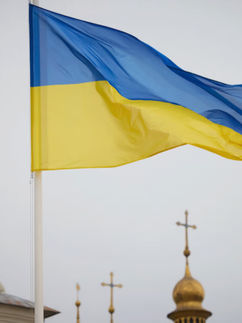Joining the dots: Pinochet’s legacy and the Chilean protests
- Dylan Gaymer
- Jan 27, 2021
- 5 min read
Updated: Dec 17, 2021

“Everything is connected to everything else, and nothing is without consequence.” - David Huddle
Dylan Gaymer
September 11, 1973, is a day that has been indelibly etched into Chile’s history; a seismic shift in the country’s leadership that has reverberated throughout time and continues to affect its political landscape to this day.
Whilst ‘September 11’ has since been eclipsed in notoriety by the al-Qaeda attacks of 2001, Chileans across the political spectrum are acutely aware of this date with reference to 1973 and the upheaval that took place. Almost five decades ago, a then 57-year-old military general called Augusto Pinochet led his US-backed group of officers to depose democratically-elected President Salvador Allende and seize control of the Chilean government. As bombs shattered the walls of the Presidential Palace and bricks crumbled to the ground, so too did Allende’s tenure as President. With gunfire and explosions engulfing the building, Allende committed suicide that day in the very office he was elected to serve.
What later ensued was the 16-year-rule of President Pinochet, taking power as the military dictator of the Government Junta of Chile before the country moved back to a democracy in 1990. This period saw the dictator brutally crackdown against political opponents and Allende-sympathisers, with approximately 3,200 people being executed or disappearing and 28,000 arrests with cases of torture.
Perhaps the most enduring legacy of Pinochet’s reign was the creation of Chile’s “Constitution of Liberty” created from a 1980 plebiscite held in a climate of intense repression and voter fraud. With blank votes being counted as “yes” and more votes being counted than there were voters in remote areas, the 67 per cent majority that allowed for the creation of the constitution has since been charged with being artificially inflated.
The constitution, which is still in place today, had two key purposes for the Pinochet government: firstly, to enshrine an economic blueprint for a free-market and neoliberal society protected from democratic interference and, secondly, to codify these tenets to ensure their longevity beyond Pinochet’s reign as President. In 1977, Austrian neoliberal economist Friedrich Hayek met with Pinochet to provide his views on the danger of “unlimited democracy” and the importance of rights, only insofar as to protect economic freedom at the expense of social welfare. Pinochet named the constitution after Hayek’s major work which was published two decades earlier.
Fast-forward to now and the past 18 months has seen Chile gripped by protests against a range of social and economic causes; the likes of which the country has not seen for decades. The protests began in response to a raise in public transport fees in Santiago but quickly evolved to cover the increased cost of living, privatisation and inequality that had been building since the Constitution of Liberty was created. Protesters remarked that the demonstrations are “not just about the metro…[they are] a cumulation of situations and the crisis of the economic model since we returned to democracy” in 1990. As resentment towards the ruling-class’ grip on wealth and power built, more than one million protestors across all generations took to the streets in Santiago to demand sweeping economic and social reform, including replacing the Pinochet-era constitution.
These demands were met ruthlessly by Chile’s President Sebastián Piñera, responding with a swift and brutal military presence to suppress demonstrators. Whilst the severity of Piñera’s response has not reached the scale of brutality displayed by Pinochet years before him, Piñera has relied upon military power to shore up the current government and control dissidents, with new legislation being introduced to expand the powers of armed forces. Water cannons and tear gas filled the streets of Santiago as forces clashed with anti-neoliberal protestors refusing to accept a continuation of Pinochet’s legacy.
Reflecting upon the 2019-20 Chilean protests in a vacuum, it is easy to simply equate the violence and destruction we have seen to incensed citizens who have grown frustrated with rising costs of living and inequality. However, looking back and joining the dots from that fateful day in 1973 to now, we can analyse the context and historical significance of these protests in Chile’s constantly evolving political landscape.
With the magnitude and diversity of the protestors’ demands and demonstrations, what exactly is on the line may be obscured to some. At its core, the 2019-20 Chilean protests are a war of ideals. Two forces have met amid a melee of sirens and destruction; one seeking to protect and further entrench a social and economic system of the past and the other fighting for a different future for Chile. Although Pinochet is now long gone, his prevailing legacy which was strategically codified into Chile’s constitution continues to affect the country’s political discourse over three decades later. Now with 36 people having died and 28,000 arrested due to the protests, the struggle between these two sides is unambiguous.
In October this year, protestors secured a significant victory for their cause, as Piñera’s government capitulated and held a referendum asking whether Chileans want the country’s constitution to be rewritten. The response was emphatic, with 78.12 per cent of voters demanding a new constitution to be drawn up by a body which will be entirely elected by a popular vote instead of one which would have been made up by 50 per cent of members of Congress. Although Chileans will not be able to vote on the new constitution until 2022, this marked a considerable step in the pursuit to move on from Pinochet’s legacy.
It may seem paradoxical, but Chile’s 2020 referendum was not really about Pinochet — more than half of eligible Chilean voters were younger than 20 when he left office in 1990, and about 1 in 5 hadn’t been born by then. Rather, the debate targeted his charter’s lack of protection against economic inequalities, as well as problems with welfare and environmental degradation. The ‘Constitution of Liberty’ is an instrument of neoliberal ideology that Pinochet, with the help of advisors and foreign support, implemented to establish an economic and social system that would benefit the few. What we’ve seen in 2019 and 2020 is not a fight against Pinochet, but rather a fight against ‘Pinochet’s Chile’ which began decades before the first protestor set foot in the streets of Santiago.
Whilst Pinochet has since passed, with only his ashes left in Chile, his legacy has undeniably shaped the country's contemporary politics and the issues it attempts to grapple with. The Chilean protests of the last 18 months are a timely reminder of the significance history and context plays in the events that change the world today. With each decision and machination made by those who wield considerable power, the lives of not only those immediately affected, but also generations to come, will be shaped. As the world experiences unprecedented and consequential changes in the 21st century, it behoves us all to analyse and question current iterations of political change and how they will affect future generations.
This article was originally published in YDS' end of year Special Edition, '2020'. The Special Edition can be accessed here.
Dylan Gaymer graduated from Monash University with a Bachelor of Laws and Bachelor of Arts (Politics & Spanish). He volunteered at NGOs throughout Latin America during university and currently works as a commercial lawyer.

















Comments